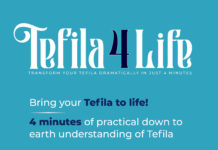
When Neal Nemhauser, 76, a retired accountant from Portland, Ore., visited a friend in Pennsylvania a few years ago, his friend’s part-time outdoor cat curled in his lap. He didn’t notice that a tiny tick had made its way onto his body through an opening in his shirt.
Several days later, an inflamed bull’s eye rash appeared on his stomach where the arachnid had landed. Two weeks later, he was ill with Lyme disease. (He fully recovered after taking antibiotics.) “I was sicker than I have ever been,” he said, with chills, fever, night sweats, coughing, appetite loss, headache, extreme fatigue and bloody urine. “I was sleeping for most of the first week and unable to eat. The coughing was painful and scary when I couldn’t take a breath. Even the energy to get to the bathroom was a major effort.”
As temperatures rise and people begin spending more time outdoors, the risk of tick exposure also increases. “This is the time of year,” said Kiersten Kugeler, an epidemiologist who specializes in vector-borne diseases with the Centers for Disease Control and Prevention. “It’s important to raise awareness and remind people of the steps they can take to protect themselves.”
We asked experts how people can keep themselves and their pets safe from ticks. Here’s what they had to say.
– – –
What diseases do ticks carry?
The answer depends on where you live. Ticks can be found in every state. However, in the United States, some places have more disease than others.
Lyme disease: Transmitted by the bite of an infected blacklegged tick, early symptoms (three to 30 days after a bite) may include fever, chills, headache, fatigue, muscle aches and, in 70 to 80 percent of cases, a characteristic bull’s eye skin rash. Most cases can be treated successfully with a few weeks of antibiotics. Symptoms of untreated Lyme may include severe headaches and neck stiffness, joint swelling and pain, irregular heartbeat, dizziness, and numbness or tingling in the hands and feet. The CDC estimates that 476,000 Americans probably develop the disease annually. It is most common in the Northeast, Mid-Atlantic and Upper Midwest. Almost all Lyme disease cases occur in 14 states: Connecticut, Delaware, Maine, Maryland, Massachusetts, Minnesota, New Hampshire, New Jersey, New York, Pennsylvania, Rhode Island, Vermont, Virginia and Wisconsin.
Southern tick-associated rash illness (STARI): The rash caused by STARI develops after a lone star tick bite and is similar to the Lyme disease rash. Symptoms may include fatigue, fever, headache, and muscle and joint pains. Although it’s similar to Lyme disease, the cause isn’t known. Because it resembles Lyme disease, some doctors prescribe oral antibiotics. It occurs most often in the Southern United States, where Lyme disease is rare. Lone star ticks can be found from Central Texas and Oklahoma eastward across the South and along the Atlantic coast as far north as Maine. The adult female is distinguished by a white dot or “lone star” on her back.
Anaplasmosis: Symptoms of this bacterial disease, spread by the blacklegged tick, typically begin one to two weeks after being bitten. They include fever, headache, chills, nausea, vomiting, diarrhea and muscle aches. Left untreated, the disease can cause respiratory failure, organ failure and bleeding problems, even death. Those at higher risk for severe illness include people older than 65 and those with weakened immune systems. The antibiotic doxycycline is the usual treatment. The disease is most common in the Upper Midwest and Northeast, although it also can be carried by the western blacklegged tick on the West Coast.
Babesiosis: This is caused by a parasite that infects red blood cells and is transmitted by blacklegged ticks. Some people are asymptomatic, while others have flu-like symptoms, including fever, chills, sweating, headache, body aches, fatigue, nausea, loss of appetite and muscle aches. Because the parasite affects red blood cells, it can result in hemolytic anemia, a potentially life-threatening illness for those who are over 50 or immunocompromised. It’s treated with anti-parasitic drugs and antibiotics. It occurs primarily in the Northeast and Midwest, with the highest risk in New England (Connecticut, Maine, Massachusetts, New Hampshire, Rhode Island and Vermont), New York, New Jersey, Wisconsin and Minnesota.
Rocky Mountain spotted fever: It’s spread by several species of ticks, including the American dog tick, the brown dog tick and the Rocky Mountain wood tick. Symptoms include fever, rash and headache and can progress rapidly to a life-threatening illness if not treated quickly with the antibiotic doxycycline. Some infected people who recover can be left with permanent disability, including hearing loss, damage to blood vessels that may require amputation of limbs, fingers or toes, and mental problems. Most cases occur in the southeastern and south central United States. It’s most common in North Carolina, Tennessee, Missouri, Arkansas and Oklahoma.
Other spotted fevers: Spotted fever rickettsioses are a group of diseases caused by closely related bacteria. The first symptom is usually a dark scab at the site of tick bite, known as an eschar. Eschars usually develop a few days to a week after the bite of an infected tick. Several days later, symptoms include fever, headache, rash and muscle aches. All are treated with the antibiotic doxycycline. One form, Rickettsia parkeri rickettsiosis, is spread by the Gulf Coast tick, found in the southeastern United States. Pacific Coast tick fever is spread by infected ticks along the western coastline in California, Oregon and Washington.
Powassan virus: This rare illness is spread by three types of deer ticks that become infected when they feed on squirrels, mice or other rodents that have the virus in their blood. Symptoms include fever, headache, vomiting and weakness, but if the diseases progresses, it can cause confusion, loss of coordination, trouble speaking and seizures. There is no vaccine to prevent Powassan or medicines to treat it. Treatment usually involves supportive care, that is, rest, fluids and pain medications. Most cases occur in the northeast and Great Lakes regions from late spring through mid-fall.
Ehrlichiosis: This bacterial infection is spread by the lone star and blacklegged ticks. It causes fever, chills, headache, muscle aches and sometimes upset stomach. It’s treated with antibiotics and can become more serious if treatment is delayed. Cases are most frequently found in the southeastern and south-central United States, from the East Coast to Texas.
Alpha-gal syndrome: Unlike tick-related bacterial illnesses, alpha-gal is an allergic reaction to red meat that may be triggered by the bite of lone star ticks and possibly other tick species. The symptoms can include cough, hives or itchy rash, nausea or vomiting, difficulty breathing, and other allergic reactions. Most reported cases occur in the southern, eastern and central states. States with the highest incidence of people testing positive for antibodies are Arkansas, Virginia, Kentucky, Oklahoma and Missouri. There is no treatment for the syndrome, although specific allergy symptoms can be treated as needed.
– – –
What should you do if you find a tick on your body?
Use a tick removal device or a fine-tipped pair of tweezers. The CDC has instructions. Ticks usually don’t transmit bacteria for 36 to 48 hours, so the sooner you remove it, the better. Take a picture of the tick with your phone in case you develop symptoms and need to discuss the bite with your doctor in the future.
– – –
How can you stop ticks from biting you?
Wear repellent, walk in the middle of trails, and avoid brushy areas if you can. When you get home, do tick checks on yourself and your dog and take a shower. Comb your dog. You can learn more about stopping mosquitoes and ticks here.
Treat clothing and gear with products that contain 0.5 percent permethrin, which can last through several washings, or buy already treated clothing. You also can use EPA-registered products containing DEET, picaridin, IR3535, para-menthane-diol (PMD), or 2-undecanone. You also can use oil of lemon eucalyptus, a natural tick repellent, but not on young children.
– – –
What should you do to protect your pets?
If you find a tick on your dog, you should remove it promptly. The best areas to look on your dog for ticks are in and around the ears, around the tail, between the back legs, under the front legs, between the toes, under the collar and around the eyelids.
“Ticks can be difficult to find on dogs; they may be small and difficult to find in a dog’s coat, particularly on dogs with darker coat colors,” said Ann Carpenter, a veterinary epidemiologist and officer with the CDC’s Epidemic Intelligence Service.
Use a tick preventive on your dog once a month and vaccinate your dog against Lyme disease if you live in a vulnerable state.
– – –
What tick-borne diseases can pets get?
In dogs, Lyme disease symptoms include fever, lethargy, lack of appetite, difficulty walking, and, in rare cases, kidney problems, Carpenter said. Treatment for dogs usually involves antibiotics.
In addition to Lyme disease, they can contract tularemia, ehrlichiosis, anaplasmosis, babesiosis, Rocky Mountain spotted fever, hepatozoonosis and others. In addition to these, cats can also develop hemobartonellosis and cytauxzoonosis following tick bites, Carpenter said.
(c) Washington Post












There are a lot of differences of opinion regarding Lyme. One must find what’s called a Lyme Literate doctor to get treated properly.
“In the 1960’s, govt bio-weapons labs started injecting ticks with exotic diseases. Soon, people nearby began to get those diseases. Now, tick-borne Lyme Disease is endemic. Naturally the government has admitted nothing.
“A Poor Man’s Nuke — “We can kill 10,000 people at $1.43 per Life” Weaponized Ticks, Fleas, and Mosquitos — a Conversation with a CIA Black Ops Agent who Dropped Ticks on Enemies in Operation Mongoose
• it wasn’t just Lyme disease that was making people sick… it was also Rickettsia, a bacteria found in ticks, lice, fleas, mites, chiggers, and mammals
• Rickettsia was a germ that was weaponized by the US Military — they’d stuff fleas with the plague — they’d stuff Mosquitos with the Trinidad Virus — they’d stuff ticks with deadly or incapacitating diseases like relapsing fever, rabies etc “The intent is, this is the perfect stealth weapon… it’s a Poor Man’s Nuke. You drop these insects on an enemy, It weakens the population. It ties up the medical resources, but doesn’t destroy infrastructure like a nuclear bomb would. “